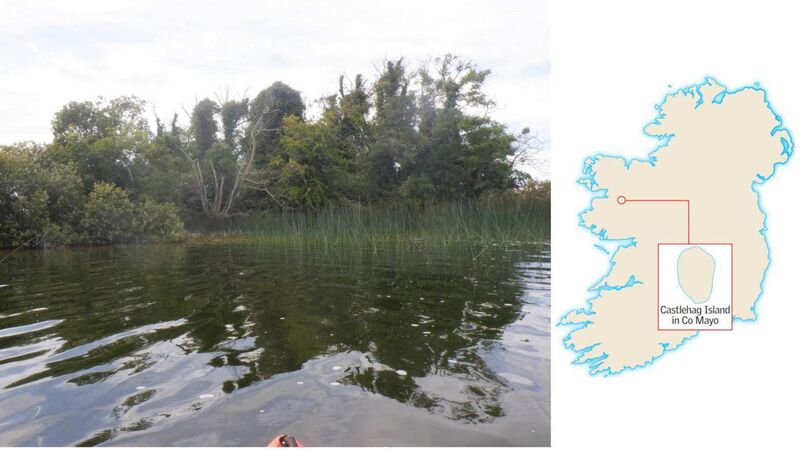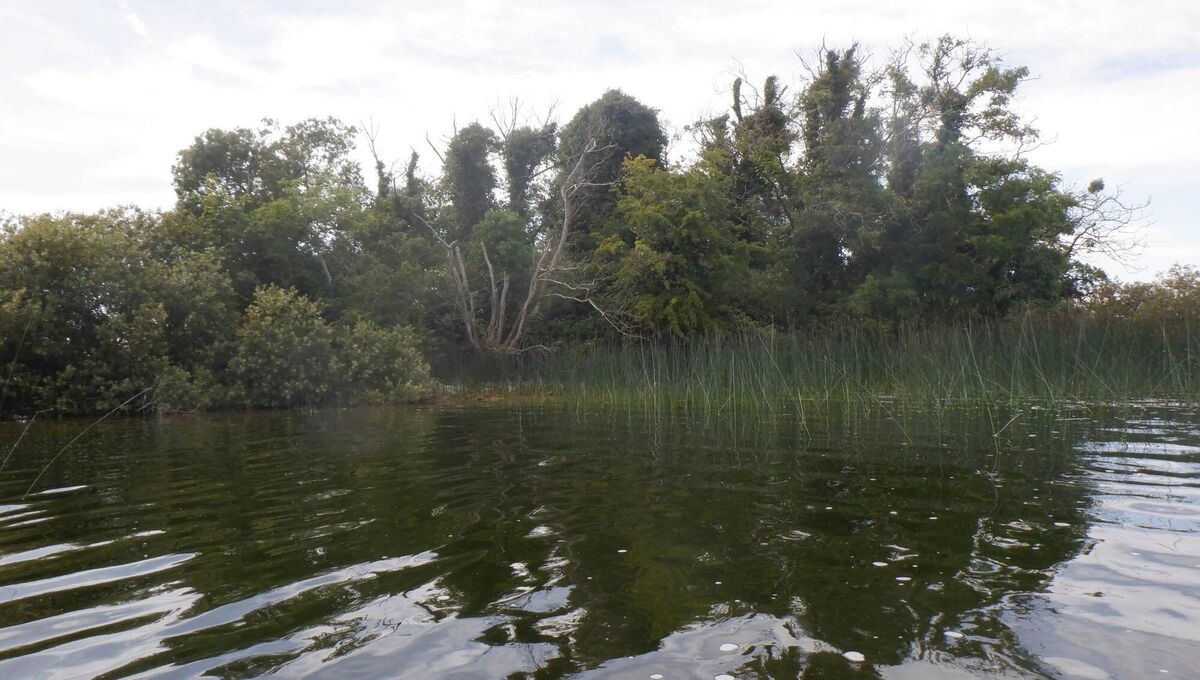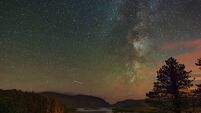Islands of Ireland: One-legged, 80-year-old clan leader of Mayo isle sent to gallows in 1500s

Castlehag Island, Lough Carra, Co Mayo with the ruins of a Bourke castle in the centre. Picture: Dan MacCarthy
A suspicion that human activity had preceded the arrival of this columnist began to grow on approach to this innocuous-looking island on Lough Carra, County Mayo.
The usual presence of native tree specimens was augmented by a huge mound of lustrous ivy which has a predilection for limestone, the rock from which many of our castles are built.
Castlehag Island on this lake is not to be confused with Castle Hag Island on the 'next-door' lake of Lough Mask. Not that you would.
The name derives not from the presence of a demonic ogress but rather is a geographic term referring to boggy land in an area of otherwise solid ground. To wit: peat hag. After landing and a veritable scraping from dense undergrowth, the remains of a castle, or tower house, revealed itself.
The fate of the castle, like many others, lay in the hands of the governor of Connaught, Richard Bingham, appointed to the role by Queen Elizabeth in 1584.
Bingham helped himself to the extensive lands of the Burke family around Castlebar. The 80-year-old, one-legged, clan leader, Edmond was shown no mercy by Bingham and was sent to the gallows.
Two scions of the family, Walter (MacTibbot) and Thomas Roe Bourke, fell foul of Bingham when Thomas refused to sign an ‘indenture of composition’ where the chieftains of Mayo were required to submit to his authority.

Bingham pursued Thomas to his lair in Castlehag in Lough Carra which he destroyed, then to Castle Hag, Lough Mask.
Walter and his brother Moyler, were eventually sent to the gallows by Bingham. Walter’s other brothers continued the fight including Richard, who was known as the Demon of the Reaping Hook.
One account read: “Thus the Bourkes under their leader, Richard, rallied their clans, and with a courage, strengthened by revenge, brandished their spears, determined to the last to oppose the officers of the crown.”
This vendetta by Bingham against the Bourkes would play out on the family’s castle on the other lough. There, a formidable tower house gave protection against most foes. Bingham amassed a force of more than 100 soldiers, besieged it from the lake, and drove out the survivors to flee into the hills.
Four years later Bingham’s men executed several hundred survivors of the Spanish Armada including at Freaghillaun South in County Galway.
The events of the late 16th century on Lough Carra and Lough Mask were recorded in 1921 by the novelist George Moore of Moore Hall.
The stately mansion overlooked Lough Carra before being consumed in a conflagration in 1923 in the Civil War.
He wrote: “Great men must have gone forth from Castle Carra and Castle Island and Castle Hag were defended with battle-axe and sword, and these were wielded as tremendously, from island to island, and along the shores of my lake, as ever they were under the walls of Troy. But what use are such deeds if there be no chroniclers to relate them.”
Moore also recorded his impressions of the loneliness of the spot: “The hour when cormorants come home to roost, they alighted with a flutter of wings on the corner wall of what remained of Castle Hag.”
The history of human occupation on Castlehag far pre-dates that of the Bourkes though. A rudimentary castle there was destroyed by King Felim O'Connor in the early 1200s.
Lough Carra lies in the centre of the county divided by a few kilometres of fields, and linked by the very short River Keel, from one of the country’s largest lakes, Lough Mask 83km sq, which itself is just north of the vast Lough Corrib.
The road from Galway to Castlebar also passes through this connecting land.
Lough Carra is unusual in that many of its islands have historic or prehistoric settlements indicating the value put on its various features: Castle Island has a tower house; Bush Island has an Iron Age enclosure; and many of the islands are manmade crannógs which are associated with kingdoms.
Adrift on this lough with the rolling Party Mountains looking down and further west the Maamturks, a feeling of timelessness pervades the soul.
- How to get there: No ferry. Kayak from northeastern shore of Lough Carra.
- Other: Journal of the Galway Archaeological and Historical Society vol xiii; Delphi Complete Works of George Moore








